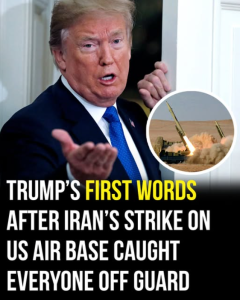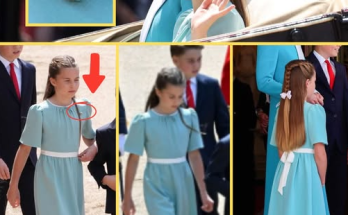🚨 Immediate Acknowledgment and Monitoring
Once news broke that Iran launched up to 14–19 ballistic missiles toward the U.S.-operated Al Udeid Air Base in Qatar—its largest military installation in the Middle East—the White House and Pentagon confirmed that the strikes had occurred and declared they were “closely monitoring” the situation . A senior defense official mentioned the base had been targeted by both short- and medium-range missiles, and President Trump, along with senior advisors, convened in the Situation Room to oversee developments .
Trump then personally thanked Iran for giving prior warning—which allowed defensive systems to intercept most of the missiles and ensured there were no American casualties
Presidential Response: Strength and Peace
In a series of public statements on social media platforms like Truth Social and X, President Trump described the attack as “very weak” and broadly dismissive, emphasizing that most missiles were intercepted and that only one missile struck—without hitting any critical infrastructure
He also called the strike a possible turning point: “perhaps Iran can now proceed to Peace and Harmony in the Region,” and quipped “CONGRATULATIONS WORLD, IT’S TIME FOR PEACE!”. The president emphasized American restraint, stating there were no plans for further military retaliation at this time .
Strategic Messaging and Diplomatic Tone
The administration shifted toward a message of de-escalation and diplomacy. According to Axios, the White House’s top priority is ending the broader Israel-Iran conflict through diplomatic channels, rather than expanding hostilities
A White House official reaffirmed that joint U.S.–Qatar defenses worked effectively, and President Trump expressed gratitude both to Iran for warning and to Qatar for intercepting the attack
But the president also reminded Iran that further escalation would prompt U.S. action, making clear that the opportunity for peace was conditional on Iran’s restraint .
Broader Security & Regional Context
Regarding security conditions:
-
The Department of Homeland Security issued advisories about possible retaliatory cyber or physical threats connected to the conflict
-
Qatar, whose airspace was closed, strongly condemned the attack as an infringement of its sovereignty and pledged the right to respond in kind under international law
-
The Atlantic coalition—including the U.S., Qatar, and other regional allies—is now reinforcing air defenses and watching closely for possible further Iranian actions .
Strategic Implications and Outlook
-
Symbolic vs. Substantive: The White House sees this as a symbolic, limited Iranian strike, not a full-scale attack—designed to signal capability rather than inflict major damage.
-
Opportunity for Diplomatic Engagement: Leveraging the lack of casualties and Iran’s warning, the U.S. is positioning the incident as a “reset moment” to encourage de-escalation and diplomacy.
-
Firm but Measured Deterrence: While no immediate military retaliation is planned, the White House retains the option to respond forcefully if Iran escalates further.
Summary
In sum, the White House reaction blends:
-
Tactical satisfaction over the miss/miss intercepts,
-
Strategic calm, portraying the event as contained and under control,
-
Diplomatic positioning, opening space for peace,
-
Deterrent posture, warning against future aggression.
This response aims to reassure both domestic audiences and regional allies that the U.S. is cautious, capable, and in charge—ready to defend but preferring diplomacy over escalation.

